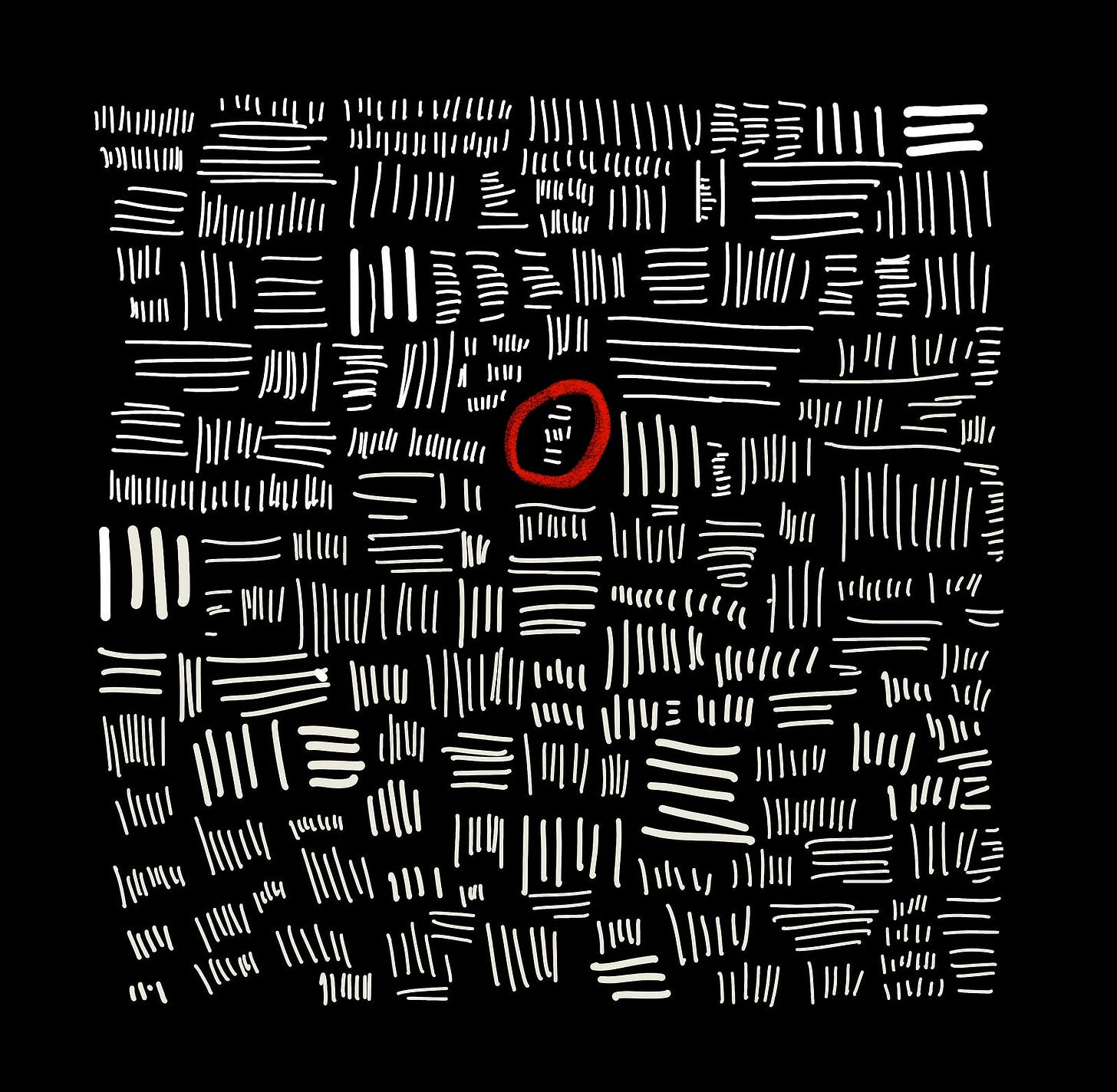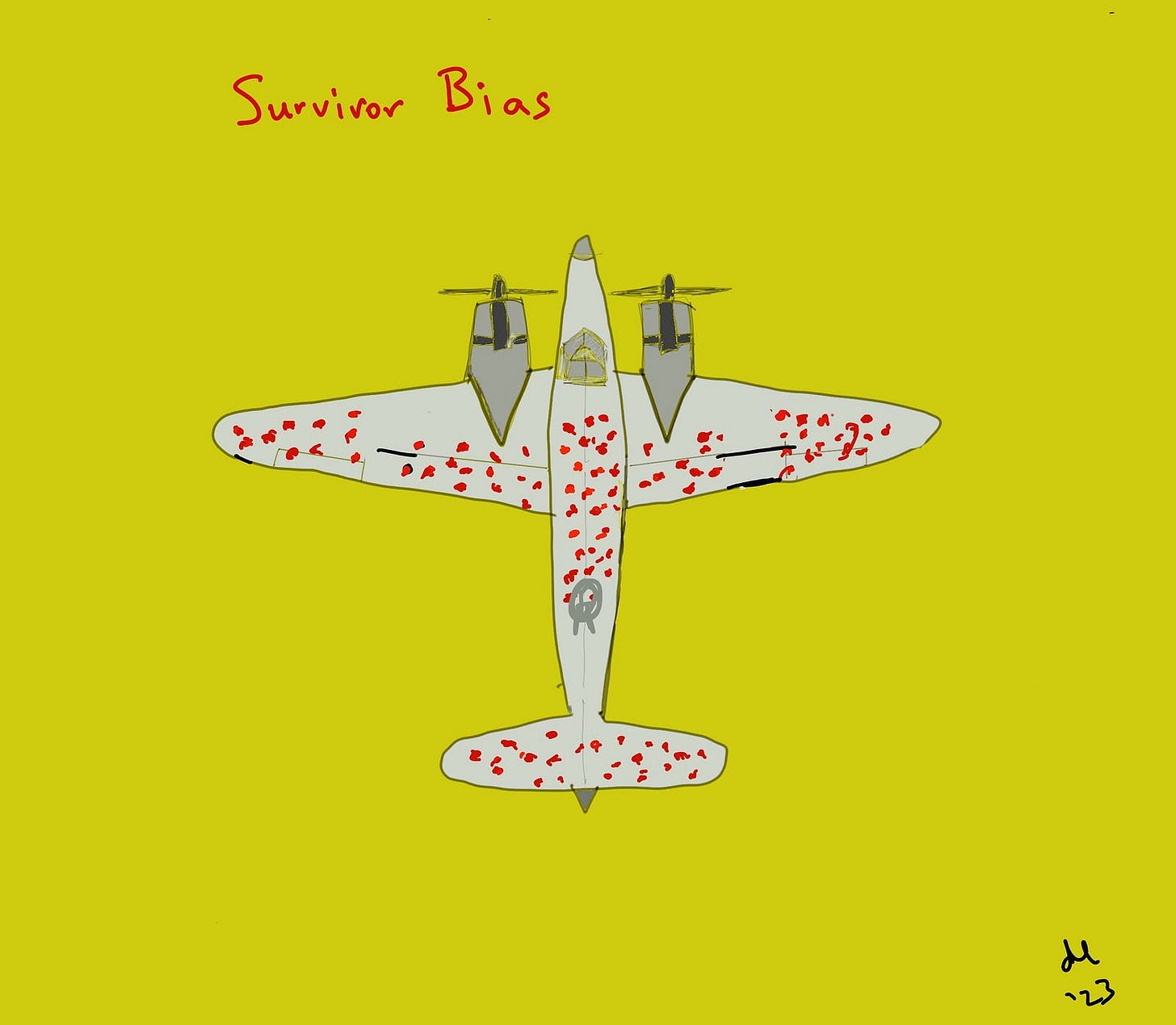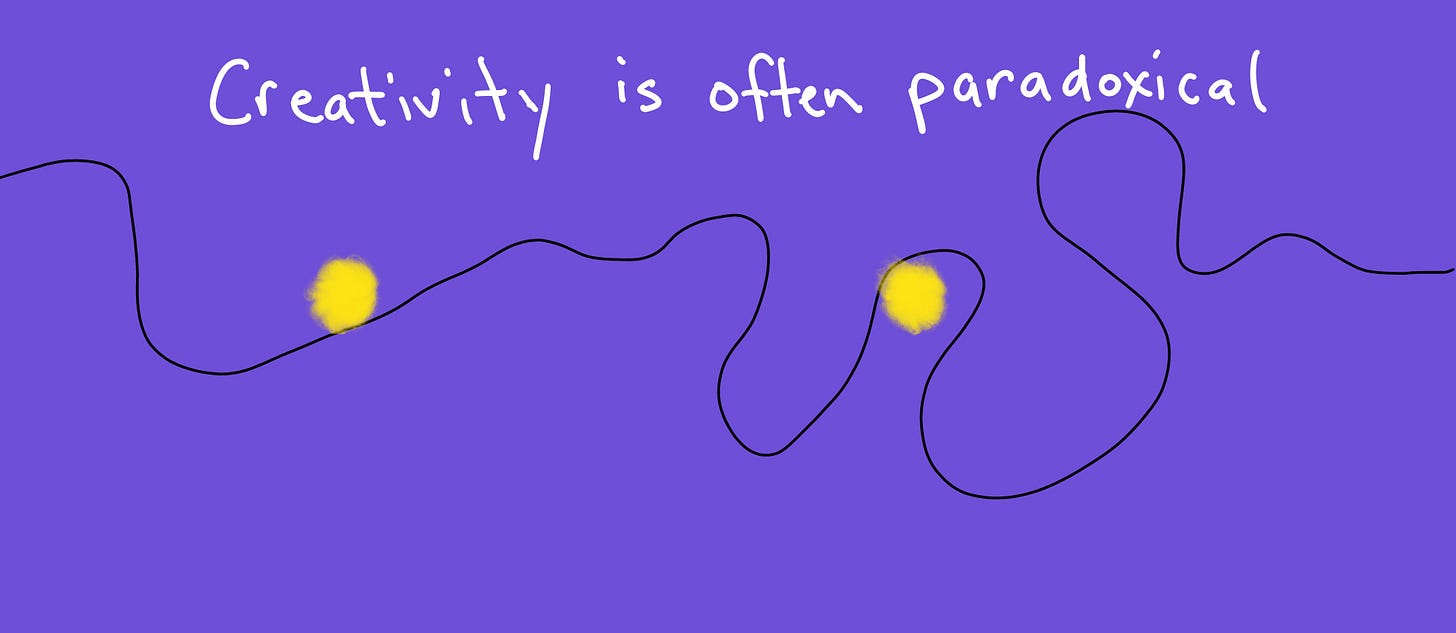In Creative Business What You Don’t See Matters Most (Why Silence is Critical Data)
Box Cutter Co. Free Issue No. 90
We love success stories. We obsess over them.
Billion-dollar startups. Best-selling books. Viral threads.
They’re celebrated, dissected, emulated, and held up as blueprints. “The way!”
The problem?
Most success stories create illusions. They become false guidebooks, maps, and yardsticks, instigating internalized pressures and false goals.
These success stories rarely reveal the whole picture. And without realizing it, many creatives start building from distorted (and inflated) assumptions and beliefs.
After three years of building creative businesses (from scratch), I’ve seen how three invisible forces persistently sabotage creative momentum:
👉 Survivorship Bias — you’re only seeing the winners
👉 Decision Fatigue — too many choices erode clarity
👉 The Paradox of Choice — too much freedom creates paralysis
These forces shape your strategy, and they shape your stamina. Plus, they might be slowing you down more than you think. Let’s unpack these a little.
1. Survivorship Bias
Survivorship bias means noticing only the winners. It’s missing the thousands who tried similar things and didn’t make it. The illusion is dangerous but straightforward:
“If I simply follow the same playbook, I’ll succeed too...”
In “The Creator Economy,” this path has left countless others frustrated, broke, and burned out. And, we rarely hear their stories. Survivorship bias doesn’t mean success is impossible. It means the data is often incomplete.
If your creative business decisions rely solely on what’s public and celebrated, you’re operating on a sliver of reality.
This illustration represents a classic example of survivorship bias. During World War II, engineers studied where returning bombers were hit to determine where to add armour.
At first, they focused on the areas with the most bullet holes. However, statistician Abraham Wald pointed out the backward flaw in thinking, as they were only analyzing surviving planes.
The missing (and critical) data were the planes that didn’t make it back.
These would show where armour was truly needed (the engines and cockpit), as the surviving planes were demonstrating that a plane could still make it back when it was hit in certain places.
It’s a powerful reminder: what we don’t see often matters more than what we do.
2. Decision Fatigue
Here’s another quiet trap: decision fatigue.
Every decision costs energy — mental, emotional, strategic. The more decisions you make, the worse they become. In creative work, where the choices are endless, this gets exhausting. What to write. Where to publish. Who to serve. What to say yes to.
I didn't notice the drain when I started building my creative enterprises three years ago. I was tired — not from the work (as I was full of excitement for that)— but I got worn down from the weight of options.
So I started doing something unsexy: Making fewer decisions, sometimes by deciding ahead of time. I created personal rules, such as:
When and how I write.
What projects I say “yes” to (it’s very few)
What platforms and strategies I don’t chase.
Fewer choices = more energy for the right work.
3. The Paradox of Choice
Then there’s the paradox of choice — maybe the subtlest trap. We often think freedom means more options. Yet, creativity thrives on constraints.
Too many options = decision paralysis.
Dr. Sheena Iyengar’s “jam study” demonstrated this clearly. A store with a table sampling 24 different jams drew crowds, but only about 3% of them bought.
Whereas a table with six jams drew fewer browsers, but ~30% of them bought. Abundance attracts. Constraint converts.
It’s easy to get stuck researching, tweaking, delaying — instead of choosing a direction and going.
The result?
Confusion. Half-built projects.
‘Progress’ that feels like treading water.
What can change this?
Deciding once, clearly — and letting other options die. No more waffling. No more panic-pivoting.
From Career Ladder to Creative Business
Three years ago, I walked away from corporate public sector employment. I was steadily moving up the career ladder, but in early 2022, I chose to step off it — cold turkey.
After more than ten years in the public sector (healthcare and higher ed), I’d earned a master’s and a doctorate, was included in regular conversations about “succession planning”, and had almost tripled my salary.
When I walked away from all that, plus a healthy, steady salary — with three kids, a mortgage, vehicle payments, etc. — I had no clients lined up. We had no financial runway.
We had a simple, but powerful belief in: the art of the figure-out-able.
I knew I wanted to build something more values-aligned, more creative, and more resilient. I aimed to build inside what’s called “The Creator Economy” — a sector Goldman Sachs estimates over $250 billion US of activity annually (with estimates it will double by 2027).
I called part of my creative enterprises: Box Cutter Co. However, I quickly ran into a lot of noise. Endless strategies. Growth hacks. “How I hit 10,000 followers in 8 weeks” playbooks. Every week, a new promise. Every success story louder than the last.
And for a while, I chased them. But the deeper I built, the more obvious it became:
The loudest paths rarely lead to sustainable creative businesses.
The people who endure don’t chase viral hits — they build systems.
That’s when I started watching the quieter ones. The ones still publishing, still iterating, still aligned after two, five, maybe even ten years. Or someone like Seth Godin, who’s been posting daily for two decades.
Success, I realized, isn’t constant visibility. It’s durable, persistent creativity. To build this, one needs to avoid falling into survivorship bias and others (some of which are explored above).
Durable Creativity
These traps — survivorship bias, decision fatigue, and the paradox of choice — aren’t just abstract concepts. They shape how (and whether) you build something lasting, durable, and sustainable.
They are why I now frame my creative work around what I call: Durable Creativity, which is:
Growth NOT measured in noise, but in quiet persistence
Creativity NOT built on viral tactics, but resilient systems
Strategy NOT driven by scarcity, but by self-awareness and subtraction
The longer I’m at this, the more I recognize: Creative lives aren’t the loudest. → They’re the clearest.
Try This
Here’s a practical way to test these ideas for yourself. Grab a notebook or open a blank doc. Write your answers to these three questions:
Where am I mistaking success stories for reliable blueprints?
What daily decisions am I repeating unnecessarily, draining my creativity?
What one clear choice could I make today to eliminate dozens of others in the future?
You might be surprised how fast clarity follows subtraction.
Levelling-Up With Creative Infrastructure
We’re taught to admire those who scale fast. But creative business is rarely about speed. I’ve found it’s often about building slow, steady, simple systems you can live with — and grow from — persistently.
I have found it’s often about developing systems you can live with and continue to build upon. Creative infrastructure, I call it.
It’s about building practices and systems that don’t fall apart when life gets messy and uncertain. And it’s about choosing constraints sustaining your best creative work.
The longer you stay in the game, the more leverage your creativity earns — Not through viral spikes, but through friction-tested, durable and persistent creativity.
How About You?
Have any of these biases captured you?
How do you ensure you don’t get caught up in the ‘success stories’ of other creators?
When you read the success stories of other creatives, do you also stop and think about how many people you don’t hear from who tried, but then moved on to other things?
Thank you to those who have recently become paid subscribers.
If you’re not already, consider becoming a paid subscriber. It’s only $ 5 per month (or $50 per year). This helps fuel more of this kind of clarity-driven, soul-aligned writing, as well as the support and tools that accompany it.
Watch for more paid-subscriber issues on their way, with more practical tips and tools.
Based on what I’ve learned in building creative enterprises, which now generate revenues well beyond what I walked away from in salary in the corporate public sector, just over 3 years ago.






